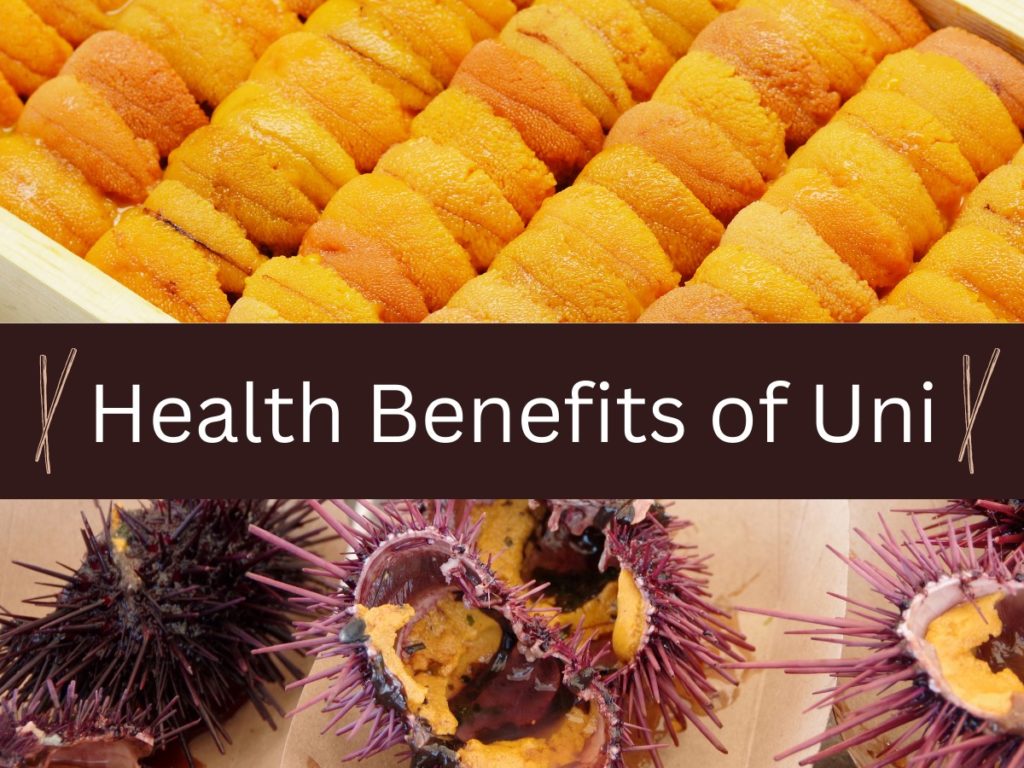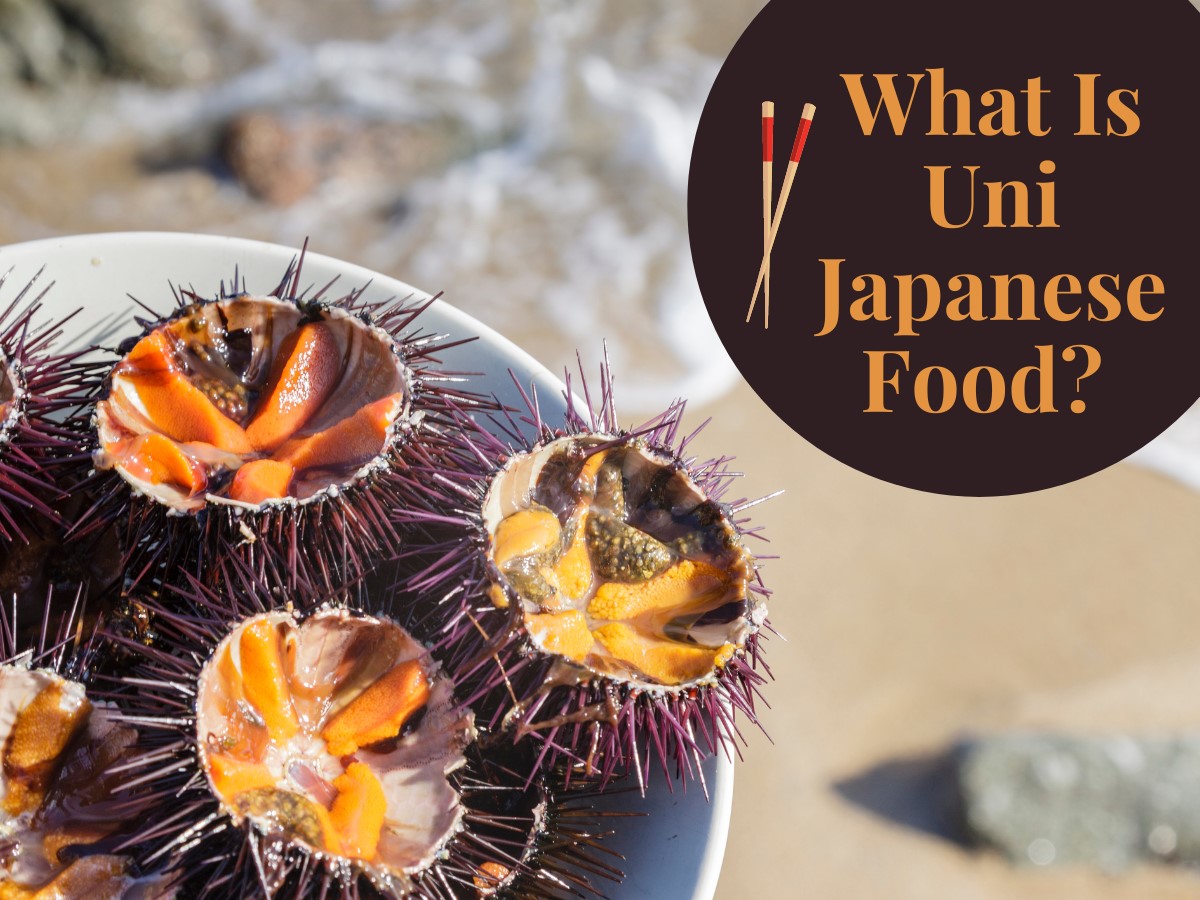Uni (pronounced as ‘oo-nee’) in Japanese means sea urchin. This spiny globular animal lives on the seabeds of oceans and feeds on algae. There are about 950 species of uni sea urchin, out of which only 18 varieties are edible. It is a famous delicacy in Japan and is becoming increasingly popular worldwide. Want to know more about Uni sea urchin? The following is an engaging guide to “What is Uni Japanese Food?”, “What Does Uni Taste Like?” And its health benefits.
What is Uni Japanese Food?
Uni Japanese food is an edible fleshy part of sea urchin, also known as sea urchin roe erroneously. Roe in Japanese stands for eggs. Nevertheless, the edible part of a sea urchin is its gonads, the reproductive organ that produces eggs (roe). It is a five-folded fleshy meat resembling the shape of a cow tongue. Uni has a creamy and custardy texture and briny to umami flavor. Moreover, the fresh and high-quality uni is yellowish gold to bright orange from the inside. However, the outside spiny tentacular shell is either purple or red.
Types of Uni
There are two types of uni based on their coastal origins: West coast uni and East coast uni. West coast uni is deep gold to orange colored and has a thicker texture with a mild salty flavor. In contrast, East coast uni sea urchin is bright yellow-hued, firmer, and has a strong umami flavor. Due to their respective flavors, West coast uni goes best with sushi, whereas East coast uni complements pasta. However, both varieties give a creamy and custardy feel to the mouth.
Japanese Varieties of Uni
In Japan, two popular varieties of uni are Murasaki uni and Bafun uni.
Murasaki Uni
Heliocidaris crassispina (sea urchin) has a dark purplish-hued spiny shell with a mustard yellow inside fleshy meat. Its harvesting occurs throughout Japan; however, one of its varieties, Kita-Murasaki, is gathered in (Hokkaido) Northern Japan. It is famous for its bigger size and mild flavor compared to other sea urchins. While Murasaki is clear, sweet, and less briny in taste, Kita Murasaki is sweeter, making it an ideal choice for newbies.
Bafun Uni
Bafun uni is botanically known as Hemicentrous pulcheririmus, commonly called horse poop uni. The outside spiny shell is dark brownish colored, whereas the inside meat is bright orange. Its harvesting occurs precisely by professional scuba divers in the deep oceans of Northeast and Southern Japan. Moreover, bafun uni has an assertive umami flavor with a hint of bitterness. One of its varieties, Ezo bafun sea urchin, gives an umami flavor following the burst of sweetness in the mouth. Due to this exotic amalgamation of savoriness and complicated harvesting, many exclusive sushi shops prefer bafun over Murasaki uni.
What Does Uni Taste Like?
Uni Japanese food has a blend of exciting flavors such as sweet, bitter, briny, and umami. This savoriness varies with the species; for example, Murasaki uni is less salty and sweet, whereas Bafun uni is more umami and bitter. In short, uni sea urchin has a taste that you either develop and indulge in its savoriness or completely hate. People who haven’t tried it before should try Murasaki uni because of its relatively sweeter taste.
Is Uni Cooked or Raw?
Uni food is a delicacy worldwide, particularly in Japan. Usually, the Japanese relish raw uni by draping it over sushi rolls and sashimi. However, in other countries like Italy and France, people love eating it with rice and buttered baguette, respectively. In short, you can savor uni sea urchin raw, steamed, or grilled. Before serving and cooking, wash the uni deeply to avoid sand or grittiness.
Uni Recipes Round The Globe
Uni Sushi
Uni sushi, also known as nigiri sushi, is a popular dish in Japan. It consists of uni (sea urchin) draped over sushi rolls. For this purpose, Japanese chefs prefer West coast uni, Murasaki, and Bafun uni for their exclusive flavor and texture.
Uni Butter
In France and NY, people love consuming uni with fresh baguettes toasted in butter and seasoned with garlic and lemon.
Uni Pasta
Particularly in Italy, uni pasta is the most loved and fancy dish. It consists of thin noodles or spaghetti served with creamy, delicious uni sauce seasoned with butter.

Health Benefits of Uni Japanese Food
- Enriched with vitamin B1 and B2 that boosts mind and body health
- Packed with vitamin A, which helps with eye health and stimulates the immune system
- Rich source of Vitamin E, a powerful antioxidant that helps fight free radicals and prevents aging
- It contains Omega-3 fatty acids ideal for heart and brain health and helps regulate cholesterol levels.
- Comprises iodine, required for normal thyroid functioning
Why is Uni So Pricey?
The reasons why uni Japanese food is so pricey are:
- The intensely laborious harvesting procedure done by scuba divers
- Hand-picking of sea urchins
- Shortage of sea urchins in some areas due to overharvesting
- Difficulty cleaning it perfectly
FAQs
When Is The Peak Season for Uni?
It’s best to consume uni Japanese food from April to September since the sea urchin is fresh and delicious at this time. Out of season, you may find it with less meat and watery consistency.
How To Identify The Highest Quality Uni?
The highest quality uni sea urchin is brightly hued. Moreover, it has a firm and thick custardy texture with no signs of liquid leakage in the package. Also, it would be best if you prevented buying low-price uni because it can be of cheap quality.
How To Store Uni?
Uni is best stored in a refrigerator since freezer ice can deteriorate its creamy consistency. You can keep the raw uni for about two days and the cooked uni for about five days in a fridge.
Consequences of Uni Overharvesting
About 50 million tons of uni is harvested annually, which may cause a rapid decline in the sea urchin population. Right now, hand-picking and lab-grown sea urchins are two sustainable approaches that can regulate this marine life. Nevertheless, this issue needs more careful consideration.
Also Read: What is The Difference Between Chinese and Japanese Food?

